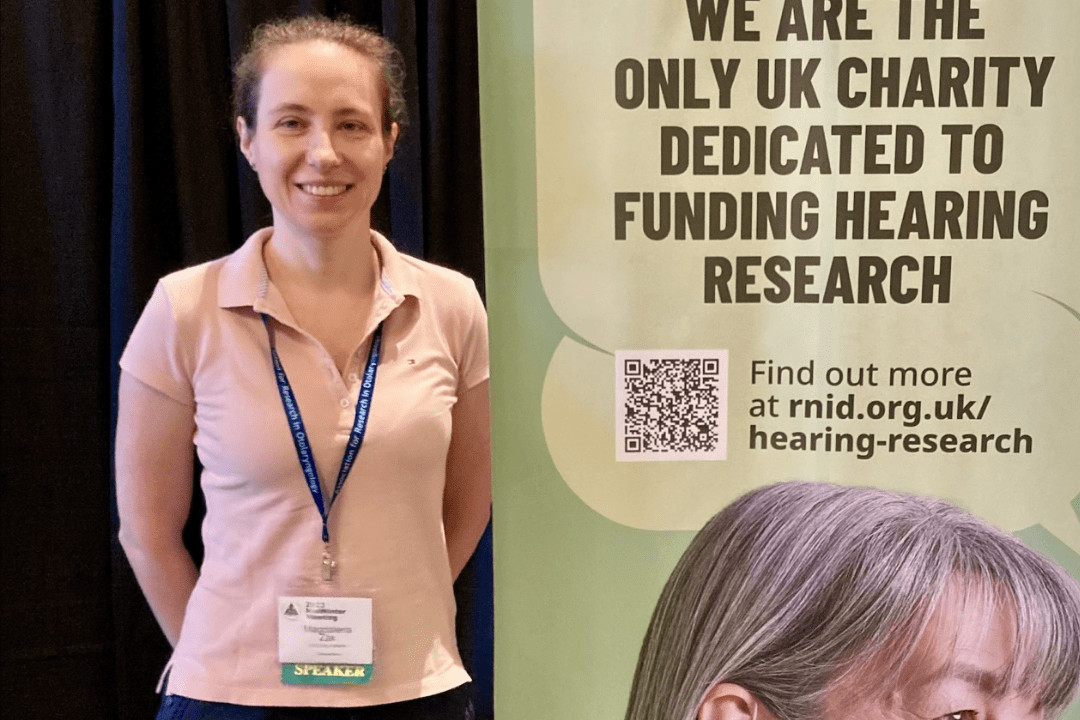University College London

Dr Magdalena Zak’s main research interest is the formation of the inner ear sensory organs that detect sound and changes in our body’s balance. She uses cell and molecular biology techniques to investigate the molecular changes that guide the development of the inner ear.
Magdalena obtained her PhD in the molecular genetics of hearing loss at the University of Tübingen, Germany. Her PhD project focused on a protein called otoferlin; changes to the otoferlin gene are associated with a type of genetic deafness called DFNB9.
More about Magdalena’s work
Next, Magdalena joined the ENT (Ear, Nose and Throat) Department at the University Medical Center Utrecht in the Netherlands, where she investigated the development and formation of sound-sensing hair cells, focussing in particular on the role of a gene called Wnt.
Magdalena then moved to the Ear Institute at University College London, where she tried to better understand the molecular signals shaping the development of inner ear sensory organs. In 2021, she was awarded an RNID Fellowship to investigate the molecular events that determine whether auditory (hearing) or vestibular (balance) hair cells are formed in the developing inner ear.
Understanding how cochlear hair cells develop in the inner ear to more successfully grow them in the lab
Read about Magdalena’s research projectMagdalena’s approaches to hearing research
In my opinion, the most exciting breakthrough in hearing research in recent years was the development of inner ear organoids (mini-organs that are grown in the lab and which resemble the inner ear, formed from stem cells).
Stem cells are cells that can develop into many different types of cells in our bodies. When grown in a dish in the lab, we can use certain chemicals, or drugs, to guide them through the stages of embryonic development in the inner ear to establish three-dimensional structures that resemble inner ear tissue. These structures are populated with specialised sound-sensing cells called hair cells.
The main advantage of these inner ear organoids is that the stem cells can be obtained from a person and used to study the genetic causes of hearing loss or to test whether certain medicines could cause hearing loss as a side effect in individual people.
Our hearing organ, the cochlea, found in the inner ear, forms from a pool of ‘precursor’ cells during embryonic development. The same pool of precursors gives rise to our vestibular system, also found in the inner ear, and which is responsible for maintaining our balance.
Not much is known about the molecular processes which decide whether these precursor cells will become part of the cochlea or the vestibular system. This is important because the methods currently used to generate inner ear organoids produce only the vestibular type of tissue.
Hence, I think that the next big step forwards would be to identify the genes responsible for guiding cells towards either a cochlear or vestibular fate. We could incorporate this knowledge into our current methods to create a versatile tool that allows us to investigate either the cochlea or the vestibular system depending on our research needs.
I have always been fascinated by the complex structure and physiology of the human body. I constantly think about how different organs in our body are specialized to carry out particular functions as well as communicate with one another to keep us healthy.
In addition, I often wonder about the underlying mechanisms which lead to disease and dysfunction of the human body. Therefore, I wanted to become a researcher to delve into these questions and aid in finding a cure for diseases and disorders by understanding the fundamental mechanisms.
I always wanted to help in developing treatments that will make a difference in people’s lives. The RNID fellowship I have been awarded allows me to work on my own research ideas that could lead to improvements in stem cell-based therapies for hearing loss.
It is a very exciting project and I feel very motivated by the fact that the funding comes from people who care about the issue of hearing loss and put their trust in me and my research vision.